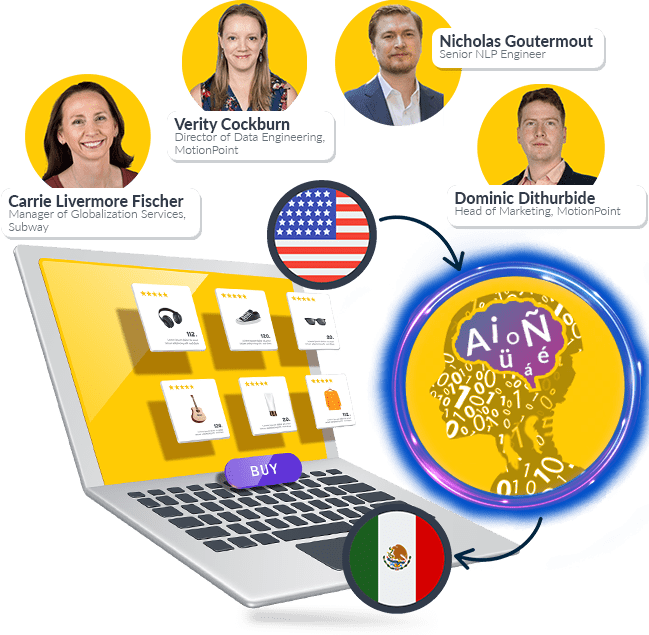Choosing the right vendor to localize your digital customer experience is tricky stuff. While countless translation agencies excel at translating documents or offline content, only a handful can successfully handle the technical challenges of website translation.
Even fewer can properly localize online portals and secure login areas. These vital elements of your CX are often more technically complex than conventional websites.
Whether your portal serves multilingual customers, international employees or regional business partners, it probably uses technologies that traditional translation companies aren’t trained to understand. They include:
- Complex web applications
- Online multichannel content
- Dynamic content
Read on to see why traditional agencies can’t deliver on portal localization, and how digital-first solutions can handle them elegantly and cost-effectively.
Why Traditional Agencies Fall Short
Many translation vendors built their reputations—and business models—on document translation: localizing assets such as books, printed brochures and Word docs.
Unfortunately, most of those old-school vendors don’t have the technical expertise or capabilities to make portal translation successful, cost-effective and expedient.
To offset this lack of expertise, they often shift all the complexity and ongoing effort—including technical configuration, collecting translatable content and publishing translated content on the localized portal—to their customers. This increases risks and cost.
Their business models can be problematic, too. They often maximize their customers’ translation costs, not reduce them. What initially appears as a low-cost option for portal translation often results in sticker shock.
In contrast, the best digital-first agencies use purpose-built technologies and expertise to remove all of the technical and operational effort required to localize and manage a multilingual portal. They also use content-optimization technologies to continually minimize translation costs.
Translating Complex Web Applications
These days, most secure portals and login areas use complex web applications to deliver unique user experiences with customized interfaces, content and more.
These robust interactive experiences are powered by JavaScript, React and Angular frameworks … which are notoriously difficult, if not downright impossible, for traditional vendors to translate.
Why? Most vendors can’t distinguish an app’s translatable content (which is text) from its programming code (which is also text). For nearly all vendors, this means:
- Words in JavaScript code are misidentified as translatable text
- This code is mistakenly translated
- When the mistakenly translated code is reintegrated into the app, the application breaks
- Further, not all translatable text is identified or translated
- This presents an unreadable “mixed language” UX to customers
That’s a bad look for any brand, in any industry. In comparison, the best digital-first vendors have superior technologies and know-how to properly parse these complex applications, accurately detect translatable text and seamlessly integrate it into the localized UX.
Translating Multichannel Content
For your localized portal to be truly successful, you should translate more than its on-page content. Fully support your localized CX by also translating:
- PDFs for forms, spec and sales sheets, employee documents, service manuals and more
- Email content to support customer outreach and provide updates and announcements
- Sales, marketing and employee training videos
- And more
Unfortunately, legacy vendors have challenges accurately detecting this online multimedia content—and even when they do, they often cannot translate it with any expediency. Some agencies take weeks to localize simple website text, an unacceptable turnaround time for online business.
In contrast, digital-first agencies specialize in translating online and digital content of all kinds. The best vendors deliver translated text within 1 business day. They also offer APIs and user interfaces that further expedite the translation process.
Translating ‘Invisible’ Dynamic Content
Unlike traditional translation agencies, digital-first agencies use powerful parsing algorithms that can detect and translate all relevant content within a secure portal.
This includes content that may never be seen by a portal user, including hundreds (or thousands) of strings of “invisible” database-delivered content.
This content might be based on a user’s location or buying preference. It’s also content that repeats across multiple pages—such as common descriptive words for product types, sizes or colors.
These translatable content strings (and their combinations) are never seen “on the page” by a single user … but all must be translated to ensure a seamless localized UX for all users.
Traditional vendors don’t have the sophisticated JSON and XML parsers to find this hidden content. They also lack the technology to detect the template-like structures that enable descriptive variables (such as colors and sizes) to be presented on-page.
For numerous technical reasons, these shortcomings can:
- Present a “mixed language” UX when untranslated content strings appear on-site
- Generate needless—and sometimes, astonishingly high—translation costs
Conclusion
It can be a major challenge to find the right translation solution for your digital CX—especially if your company has worked with a traditional vendor for many years.
But portal translation requires a different breed of solution, one that has expertise in online technologies, efficient tech-driven workflows and more.
Be sure your agency is equipped to handle the unique demands of your secure portal. And if it doesn’t, consider contacting one that can. Your success among multilingual customers, staff and partners depends on it.
Last updated on April 01, 2020

